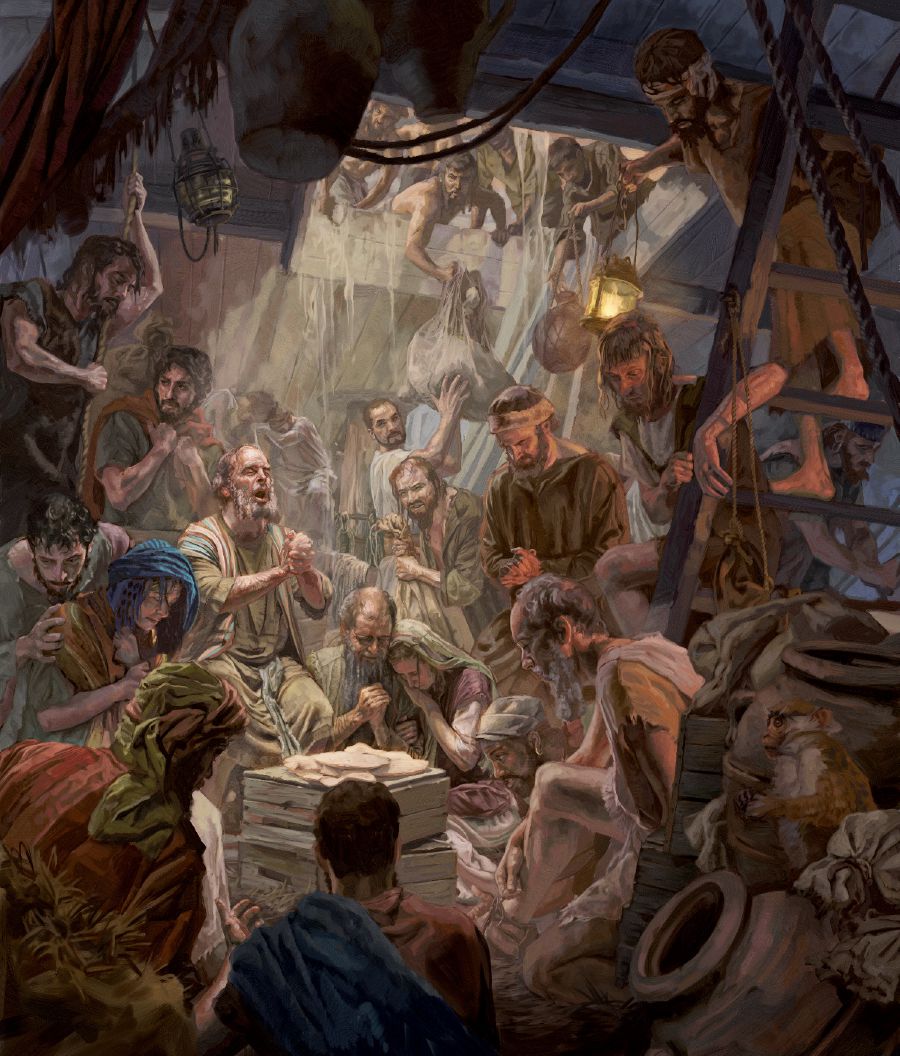Paul timi arụ mị bile kpọ, omịnị peibolou mọ tarị mọ mịẹdịa mị
1, 2. Te bụụdọọnyeama kị Paul paamọ ma, omịnị kaanghaba teeki irorotimi ma o?
Beke a goo
2 Beke a goo
3. Paul teeki gbinipẹlẹ ma, omịnị teeki ẹrẹtei dọụmịnị a o?
3 Beke a goo
“Afọrụ Mị Wó Pebị Yọụgha” (Acts 27:1-7a)
4. Paul tepaa arụ ka kị yọụpaa ma, te otuama kị ụ mọ mọ́ yọụpaa ma o?
4 Beke a goo
5. Paul, Sidon-ama bọọ te fomuun kị nana ma o, bịsẹ yemị te ka kị wó tolumọ ma o?
5 Beke a goo
6-8. Paul tebara ka kị Sidon duomú Cnidus laa ma, Kaanghaba Paul te fomuun-ama kị nana wẹrị egberigbaa ma o?
6 Beke a goo
7 Beke a goo
8 Beke a goo
“Abadịị Kimé Bị Kụrọ Bara Ka Kị Wó A Bụụdọọn Mị” (Acts 27:7b-26)
9, 10. Te bụụdọọnye kị Crete abadịị bọọ paa ma o?
9 Beke a goo
10 Beke a goo
11. Paul teeki gbaa akị arụ bọọ timi otubo pịrị ma, amịnị ba teeki mịẹ ma o?
11 Beke a goo
12. Crete a barasin dẹmị, teeki arụ paamọ ma, arụ bọọ timi otubo teeki mịẹ ma o?
12 Beke a goo
13. kime paa ifie mị, arụ bọọ timi otubo te bụụdọọnyeama kị nana ma o?
13 Beke a goo
14, 15. (a) Tetuu kị duonị, Paul wo gbaa wẹrị berifaanye waị gbaa ma o? (b) Paul gbaa yemị te ka kị wó tolumọ ma o?
14 Beke a goo
15 Beke a goo
“Kịmịsẹ Yelaagha Bara Mú Ogbo Laa Mị” (Acts 27:27-44)

“He . . . gave thanks to God before them all.”—Acts 27:35
16, 17. (a) Paul te fomuun ka kị tẹẹbịbị mịẹ ma, bá teeki paa ma o? (b) Paul gbaaye mị tebara ka kị paabein ma o?
16 Beke a goo
17 Beke a goo
“Ebibara Wó Kekeree Mị” (Acts 28:1-10)
18-20. Malta otubo tebara ka kị “ebibara a kekeree” ma o, bá te tamamaye kị paa ma o?
18 Beke a goo
19 Beke a goo
20 Beke a goo
21. (a) Luke, Acts fun bọọ gẹẹ yebo, omịnị teyeama kị dọụ ẹrịdẹ a o? (b) Paul te tamamaye kị mịẹ ma, bei yemị tebara ka kị Malta otubo gbele ma o?
21 Beke a goo
22. (a) Luke gee fun gbelemọ yọmị, kẹnị professor teeki gbaa ma o? (b) Barịị egberitịbị mị teeki wó mọ tolumọ mịnị a o?
22 Beke a goo